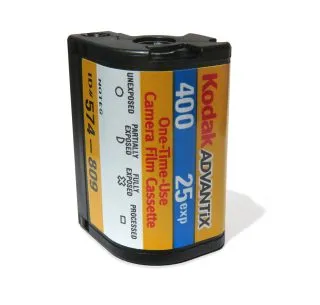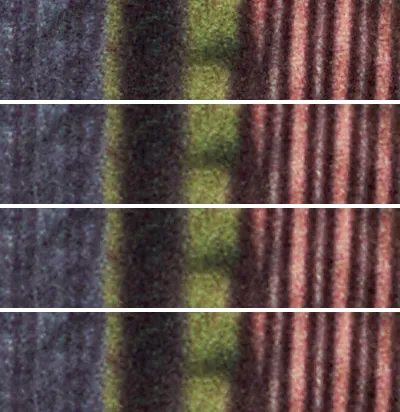35mm Film Resolution (Part 1)
Nowadays, when we refer to a photograph's "resolution" or "image quality", we generally mean its pixel density or, when printed, its Dots per Inch (DPI). Back in the days of film photography, a comparable measure of image quality was based on the film's grain. Since FilmFix deals with 35mm film transfers (as opposed to larger-format films that some photographers used), we will confine this discussion to 35mm film resolution.
Thirty-five-millimeter film has a digital resolution equivalent to approximately 5.6K — a digital image size of about 5,600 × 3,620 pixels. The finite resolution of film will fluctuate, based on multiple variables (see list below). A film's image quality depends on its "grain".
Grain begins as tiny silver particles in the film's emulsion. These silver particles have the job of storing the image information. Before the film is exposed, they are light-sensitive. Upon exposure to light, the aggregate of silver particles records a latent image. Then, after the exposed film is developed, the now light-activated silver particles resolve into dots of color (in the case of color film) or shades of gray (in the case of black-and-white film). These dots are known as grain.
All of these variables influence the film's resolution:
- Is the film black & white or color?
- What is the ASA (ISO) value of the film? The ASA (American Standards Association) — now more commonly known as ISO (International Organization for Standardization) — value refers to the film's "speed", or light sensitivity. ASA/ISO values translate directly into grain size: Higher ASA/ISO = larger grain. As a general rule, "fine-grained film" requires more light or longer exposure, whereas coarse-grained film can be used in low-light conditions.
- What is the type of grain: T-Grain film, or traditional grain film?
- What is the brand and quality of the film? Film photographers commonly used Ektachrome, Kodachrome, and many other film brands — each with its own varying attributes and characteristics.
- What was the film's developing method? For example, raising the processing solution temperature will increase the silver grain size, thus decreasing the film's resolution.
Slide Scan Samples from 9.5K to 4K
The four image strips illustrate a 35mm slide excerpt, of a slide we digitized. From top to bottom, it was captured at 9.5K, 7.1K, 5.6K, and 4K resolution.
One can see how the bottom-most, the 4K scan, looks blurry and is not holding the details of the grain. In comparison, when you look at the first two images, the difference between 9.5K to 7.1K is barely detectable. We transfer 9.5K, as seen in the top-most strip.














